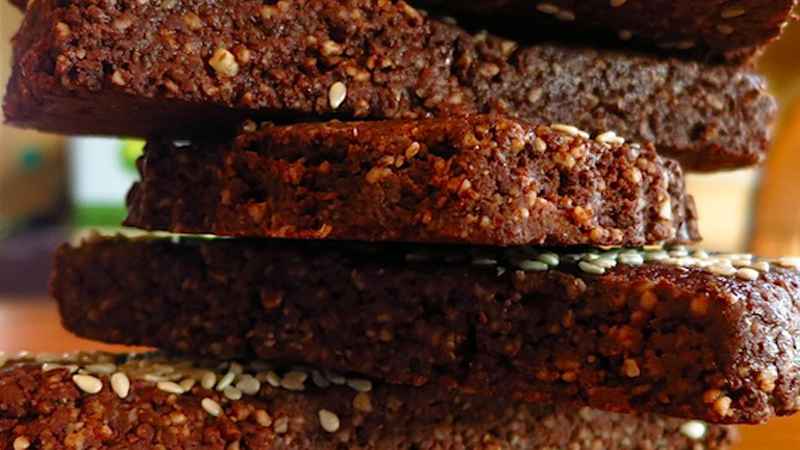
Real cocoa can help your muscles move better, promote graceful aging, enhance brain power, and reduce the risk of heart disease, cancer and Alzheimer’s.
Off the northern coast of Panama in the south Caribbean Sea lie the San Blas Islands. For generations, the Kuna natives who live there continue to consume large amounts of the fruits from the Malvaceae tree, an evergreen native to the tropics of the Americas. The fruits are also known as theobroma cacao, or cocoa as it’s come to be known. Theobroma is from the Greek, meaning “food of the gods.”
The Kuna, whose main beverage is made from cocoa, have great longevity, and a very low incidence of many diseases. Harvard Medical School’s Dr. Norman Hollenberg and colleagues studied the people living on the San Blas Islands, along with neighboring Panamanians who ate similarly but did not use much cocoa. The researchers found the non-cocoa consumers had over a 1,000 percent higher incidence of heart disease, and over 600 percent increase in cancer.
Studies have shown beneficial effects of cocoa on insulin resistance, oxidative stress, and inflammation, with others showing that a particular group of phytonutrients called flavonoids (also referred to as bioflavonoids or flavanols) could help prevent cardiovascular disease, cancer and many other chronic illnesses. Cocoa is the richest natural food source of these nutrients. However, just grabbing a candy bar or instant hot chocolate won’t give you much healthy benefits because processed cocoa—the most common form available—has a significantly reduced content of flavonoids. Most of these products also contain harmful, high-glycemic sugars, unhealthy dairy, and other ingredients that can actually contribute to illness (see “Milk proteins: The Good and the Bad”).
Flavonoids exert powerful effects on blood vessels, one of the reasons they can reduce blood pressure and improve heart function. Those with blood sugar problems are especially vulnerable to circulatory problems, and these individuals may benefit from cocoa’s nutrition as well. There are, perhaps, more than a billion of these people on earth who are carbohydrate intolerance—probably 100 million in the U.S. alone. Their conditions include the full spectrum of diabetes, those with abnormal blood sugar regulation, and other problems with varying degrees that lead to blood vessel complications. When chronic, this circulatory distress can also damage the liver, muscles, and the nervous system, including the brain. These individuals should avoid all refined carbohydrates, especially sugar, and make their own low-glycemic, healthy cocoa-rich foods.
Cocoa’s phytonutrients include many other compounds, including the powerful group of polyphenols, but most research has focused on the health benefits of flavonoids. These include some very specific actions in the body. First is the increased natural production of nitric oxide, a compound that can significantly improve the function of blood vessels, which can increase circulation. This means more nutrient-rich blood is delivered to organs, glands, muscles and bones, and more metabolic byproducts are removed.
In the case of the brain, consuming cocoa has been shown to improve circulation for two to three hours after consumption. This makes having a Phil’s Bar or other cocoa snack a valuable asset before an important meeting, a long drive or for students taking tests. But this idea can backfire if eating a high glycemic product, which can impair brain function.
Flavanol-rich cocoa may also work much like aspirin to promote better circulation by preventing blood platelets from sticking together.
In addition to improving circulation, flavonoids are powerful antioxidants. As such they can control chemicals called free radicals, which cause us to age quicker and increase the risk of many diseases. (See also, “Keys to Successful Aging.”)
The production of nitric oxide and antioxidant action can also improve muscle function. This is particularly important when working out, and especially for competitive athletes—and, need I say, for aging muscles, which are more easily damaged by free radicals.
Don’t be fooled into thinking you can get all your antioxidants in a pill—you can’t. Many studies in past decades have shown the vital need to obtain these key nutrients from foods, especially fresh fruits and vegetables, and cocoa, while other studies have failed to demonstrate dietary supplements containing antioxidants can accomplish the same.
With all these wonderful healthy nutrients from a food consumed by millions of people in large amounts, one might think the benefits would be more apparent, such as less heart disease, high blood pressure and cancer. Just like there are two kinds of healthy desserts—chocolate and everything else—there are two very different types of chocolate: health and unhealthy.
Most people eat unhealthy chocolate-containing foods in the form of desserts, shakes, energy bars and various types of candies. But it’s all junk food, including the vast majority of products sold in health stores—even the organic versions. As such, these foods diminish health starting with the first bite. This is due to the many bad ingredients used to make these products, most notably white sugar, often disguised as cane juice, beet sugar, and other fancy names. (See, “What Really Is Junk Food.”)
When making your own chocolate recipes, use only pure cocoa—without sugar, dairy or other unwanted ingredients. While these forms of cocoa are not always easy to find (because junk food cocoa is cheaper and more readily available), healthy cocoa comes in powder and solid forms, as dark, unsweetened cocoa. Use these options to make your own healthy desserts, snacks, shakes and other foods, sweetened with honey or fruit to maintain a low glycemic index. (See Recipes!)
While buying raw, organic cocoa for your recipes is the obvious choice, avoiding highly processed types are also important. This includes cocoa labeled, “processed with alkali,” which is also known as Dutch processing or Dutching. It might sound sexy, but this kind of cocoa contains significantly reduced levels of phytonutrients—up to 90 percent less flavonoids. (The different types of cocoa I use are listed in Recommended Kitchen Aids.)
Another issue with chocolate, as reported by Forbes online in 2011, is about the serious problem of child labor abuses in African cocoa farms. The International Institute of Tropical Agriculture says that there were 284,000 children working on such farms, often in dangerous conditions, often in some form of indentured servitude. These plantations supply chocolate to major US candy makers. You can avoid this issue by buying organic cocoa and making your own healthy treats.
Real, unsweetened cocoa typically contains significant protein content of about 7 or 8 grams per ounce. It is also low in carbohydrate—between 8 and 13 grams per ounce, with 50 to 60 percent or more of that carbohydrate coming in the form of fiber. Like other beans, cocoa contains many vitamins and minerals, including natural folates, niacin, zinc, and magnesium.
About half of the content of cocoa is natural fat. This cocoa butter also has great health benefits, with great taste a key reason it’s so delicious. While it can be used to make white chocolate, there is little to no flavonoids in cocoa fat.
But cocoa butter does have nutritional attributes. More than a third is health-promoting monounsaturated oil, and it contains the essential fatty acid linoleic acid. It also has a moderate amount of stearic acid. Though saturated, this fat can help reduce LDL cholesterol. Because of its strong antioxidant ingredients, cocoa can help protect us against LDL-cholesterol damage.
Is cocoa addicting? Many people are aware of the intense craving they have for chocolate. But the high levels of added sugar contained in most products are probably more addictive than the cocoa alone (see, “Sugar Addiction: Is It Real?”). However, psychoactive compounds present in cocoa, salsolinol being the main one, might be why chocolate itself can be addicting. Also, a typical single serving of cocoa may contain 25 to 50 mg of caffeine (compared to a cup of coffee which can have 100 to 300 mg, and black tea’s 50 to 140 mg of caffeine), enough for many people to notice a buzz.
The flavonoids and polyphenols in cocoa are much like those in grape skins. This might make cocoa the next red wine as research trends continue unlocking its many health mysteries.








